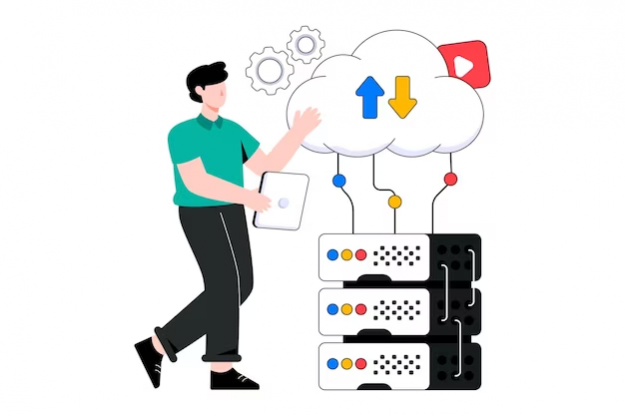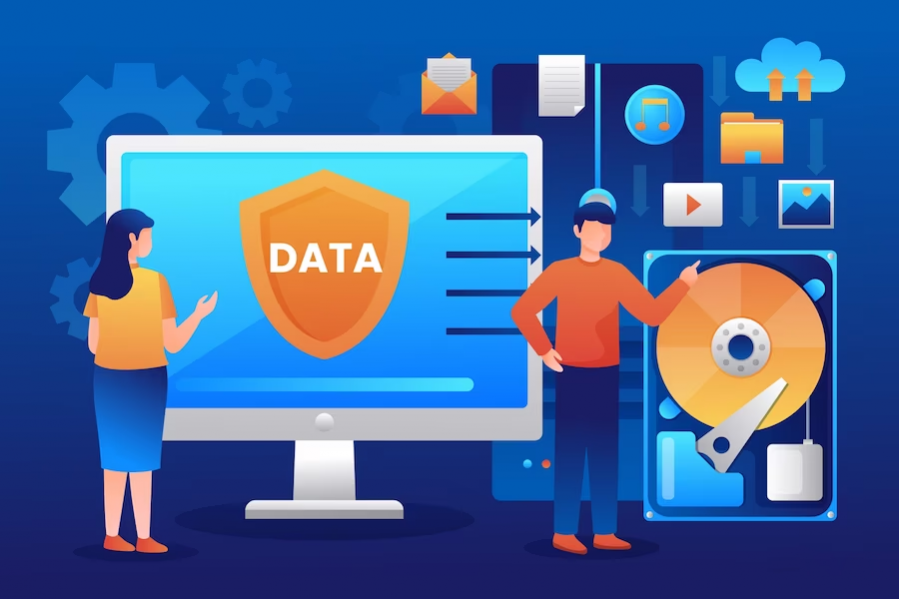From Data to Insights
Data cleaning and preparation are important steps in the data analysis process. This process involves transforming raw data into a format that is suitable for analysis and making sure that the data is accurate, complete, and consistent. In this blog post, we will learn step-by-step procedures for data cleaning and preparation that can help you get the most out of your data.
Define Goals
The first step in data cleaning is to define goals and have a clear understanding of what result we want to achieve with our data and how it will be used. This will help us decide what data to include, what data to exclude, and what data to modify.
Some common goals include:
-
Identifying and handling missing data: Missing data can affect the accuracy and validity of the analysis. That’s why it’s important to identify missing data and decide how to handle it.
-
Standardising data: To facilitate analysis, it is often necessary to standardize the data by converting it into a consistent format, unit, or scale.
-
Removing duplicates: Duplicate data can skew analysis and provide misleading results. Therefore, identifying and removing duplicate data is an important goal of data cleaning and preparation.
-
Handling outliers: Outliers can have a disproportionate impact on analysis. Handling outliers involves identifying them and deciding whether to remove them, transform them, or include them in the analysis.
-
Addressing data errors and inconsistencies: Data can contain errors, inconsistencies, or inaccuracies that need to be corrected or reconciled before analysis.

Understand your data

Before cleaning and preparing data, it’s important to understand it. This contains exploring data, identifying patterns and trends, and understanding the relationships between different variables. Understanding data is an important step in data cleaning and preparation as it helps to identify any issues that need to be addressed before analysis. Here are some steps to understand data:
-
Explore the data: Exploring the data include summary statistics, histograms, scatter plots, and box plots.
-
Identify missing data: Check for missing data by examining summary statistics or visualizations of the data.
-
Check for outliers: Identify any outliers in the data and determine whether they are legitimate or erroneous.
-
Verify data quality: Check for errors or inconsistencies in the data, such as typos, duplicate entries, or incorrect formatting.
-
Standardize the data: Check if the data is in a consistent format, units, and scale.
-
Consider the context: Consider the purpose of the context will help to determine what data cleaning steps are necessary and how to interpret the results.
-
Document the steps: Document all the steps.
Remove duplicates
Duplicate data causes problems in analysis, as it can skew results and lead to inaccurate conclusions. To avoid this we remove any duplicate data from the dataset.
Here are some steps to remove duplicates:
-
Identify duplicates: Check for duplicate data by examining the rows or columns of the dataset.
-
Decide on the criteria: Determine what criteria should be used to identify duplicates.
-
Choose the duplicates to remove: Decide which duplicates to remove.
-
Remove duplicates: Remove the duplicate data from the dataset.
-
Verify the results: Verify that the duplicate data has been removed correctly
-
Document the process: Document the process of removing duplicates data.

Handle missing data

Missing data is a common problem in datasets, and it can be caused by a variety of factors, such as data entry errors, survey non-response, or system failures.
Here are some steps to handle missing data:
-
Identify missing data: Check for missing data by examining the summary statistics or visualizations of the data.
-
Decide on the imputation method: Decide on the best method for imputing the missing data.
-
Impute the missing data: Imputing the missing data can be done using built-in functions or writing code to fill in the missing values.
-
Verify the imputed data: Verify that the imputed data makes sense and is consistent with the context of the analysis.
-
Consider the impact: Consider the impact of the imputation on the analysis.
-
Document the process: Document the process of handling missing data for transparency and reproducibility purposes.
Standardize your data
Standardizing your data involves converting different data formats into a common format.
Here are some steps to standardize the data:
-
Identify the data to standardize: Determine which variables in the dataset need to be standardized.
-
Choose the standardization method: Choosing the best method for standardizing data may include rescaling the data to a common range, converting the data to z-scores, or using other normalization methods.
-
Apply the standardization method: Apply the chosen standardization method to the data.
-
Verify the standardized data: Verifying the standardized data can be done by examining summary statistics or visualizations of the data.
-
Consider the impact: The standardized values may affect the statistical properties of the data, and it’s important to evaluate how the standardization affects the results.
-
Document the process: Document the process of standardizing the data for transparency and reproducibility purposes.

Validate your data

Validation involves checking data for accuracy and completeness.
Here are some steps to validate the data:
-
Verify data accuracy: Check for accuracy by examining the data for errors, inconsistencies, or outliers.
-
Check for completeness: Ensure that all required data is present and accounted for.
-
Check for consistency: Ensure that the data is consistent with the context of the analysis.
-
Validate data types: Ensure that the data is of the correct type.
-
Verify data integrity: Ensure that the data is consistent and accurate over time.
-
Document the validation process: Document the process of validating the data for transparency and reproducibility purposes.
Document your data cleaning and preparation process
At last,it is important to document the process. This will help in understanding, what was done to the data, why it was done, and how it was done. It will also make it easier to reproduce your analysis and to share your data with others.
Here are some steps to document the data cleaning and preparation process:
-
Describe the original dataset: Provide a description of the original dataset, including the source of the data, the format of the data, and any other relevant information.
-
Outline the data cleaning steps: Describe the data cleaning steps taken, including identifying and handling missing data, removing duplicates, standardizing the data, and validating the data.
-
Document any data transformation: Document any data transformations performed, including any mathematical operations, scaling, or aggregation.
-
Explain any outliers or anomalies: Explain any outliers or anomalies found in the data and how they were handled or addressed.
-
Describe any additional data sources: Describe data sources including how they were obtained and how they were integrated with the original dataset.
-
Provide documentation of any software or tools used: It includes the version numbers and any relevant settings or configurations.
-
Include summary statistics and visualizations: Include summary statistics and visualizations of the cleaned and prepared data.

Conclusion
In conclusion, data cleaning and preparation are essential steps in the data analysis process. By following these best practices, you can ensure that your data is accurate, complete, and consistent, and that you can get the most out of your data.







